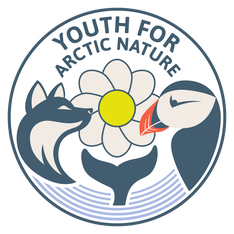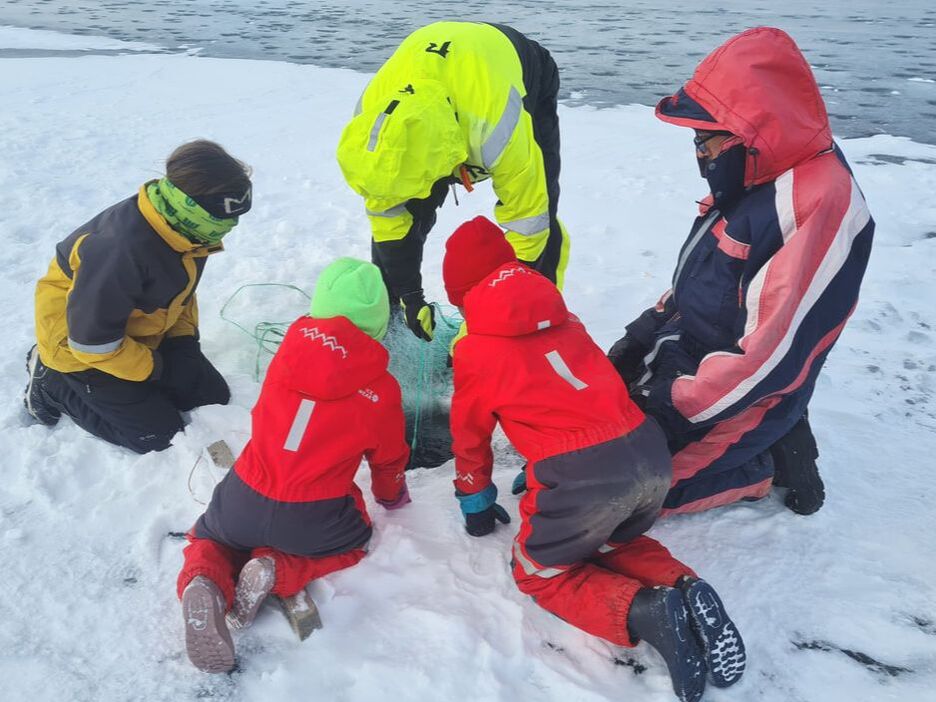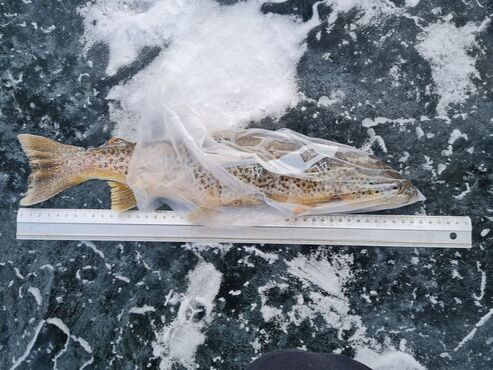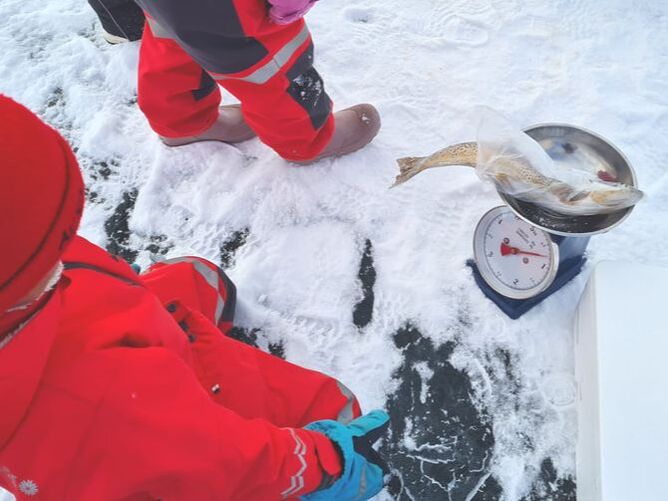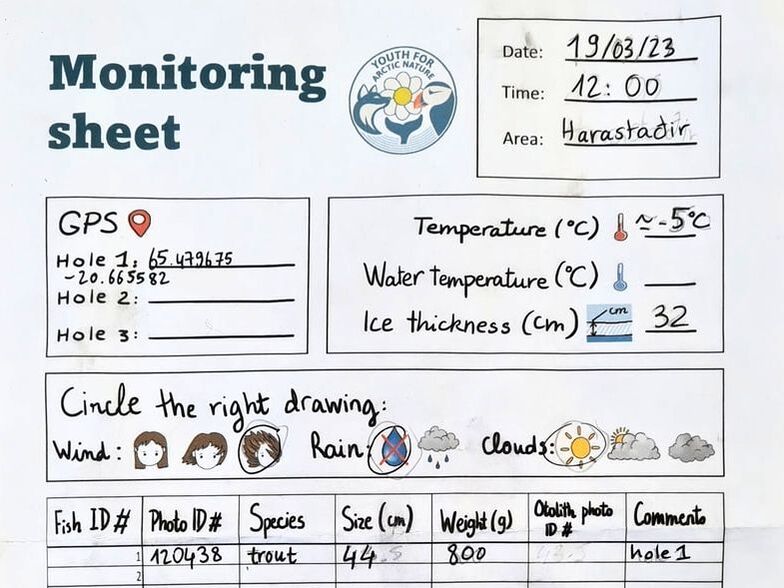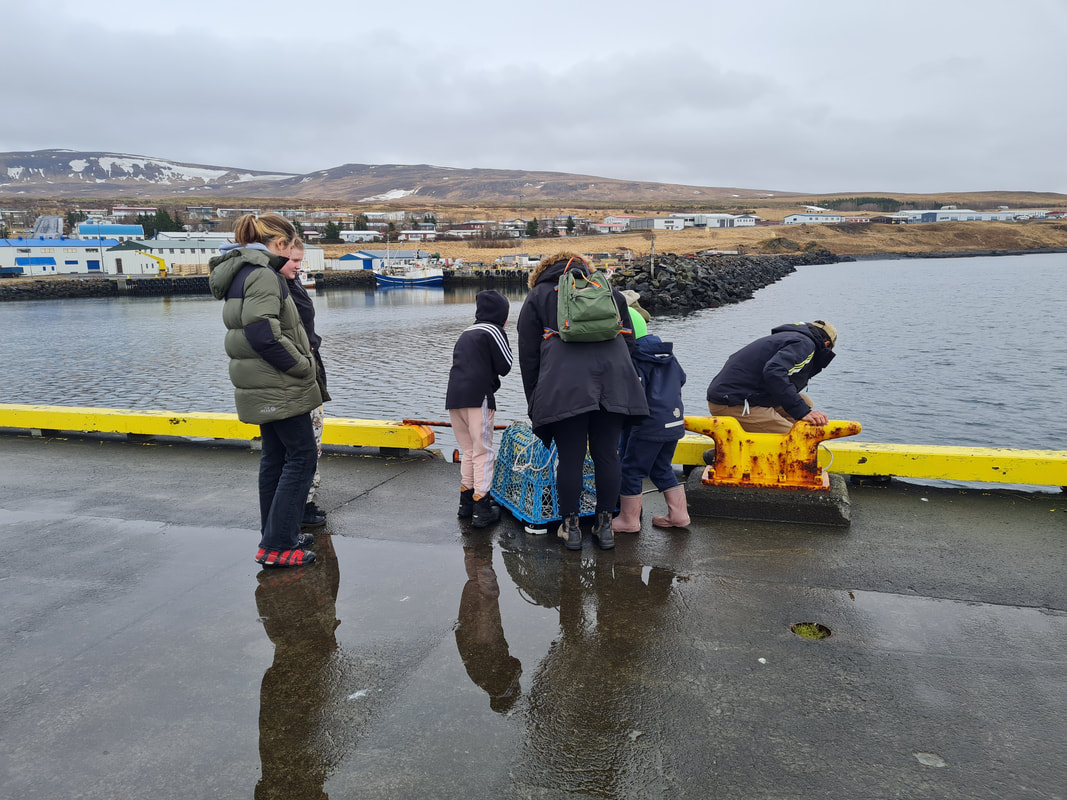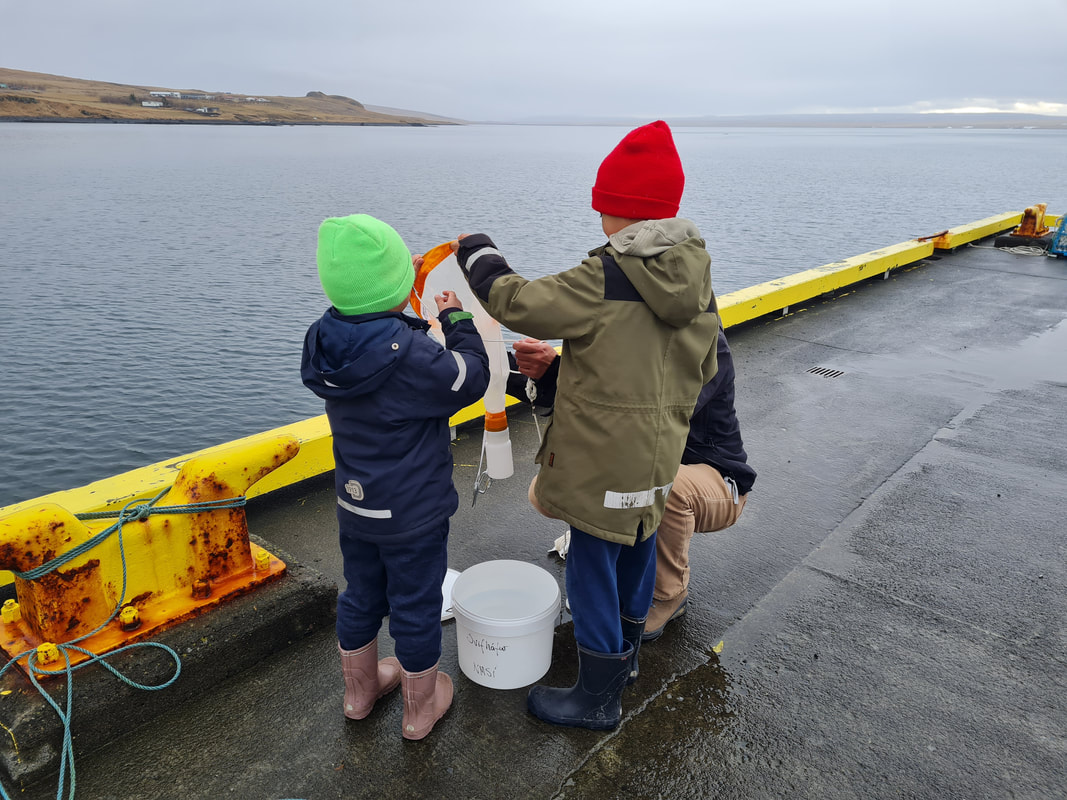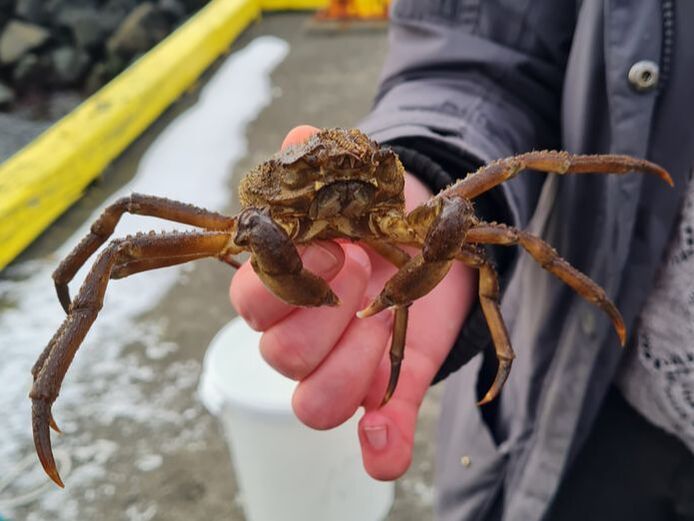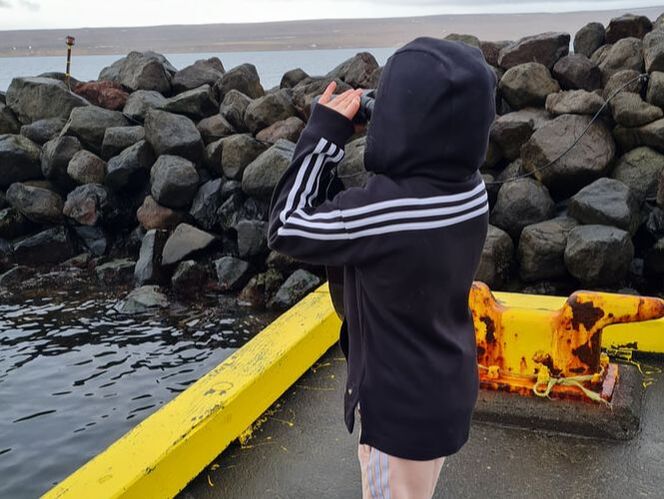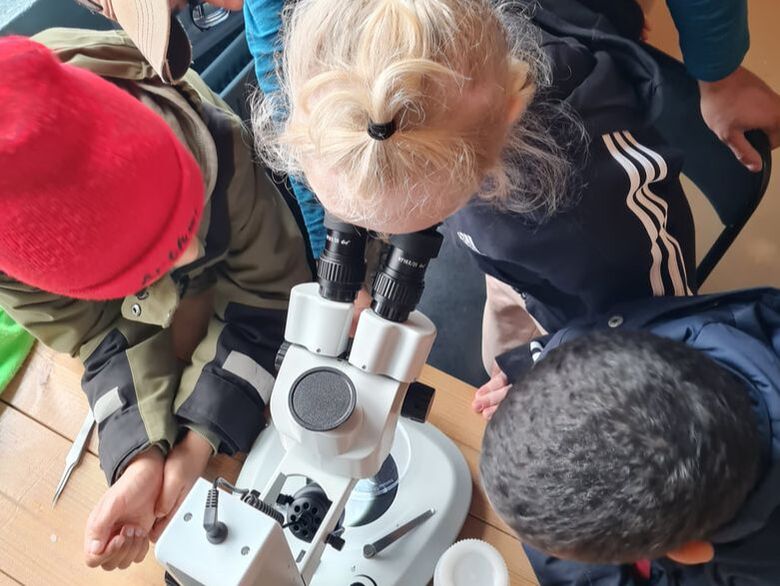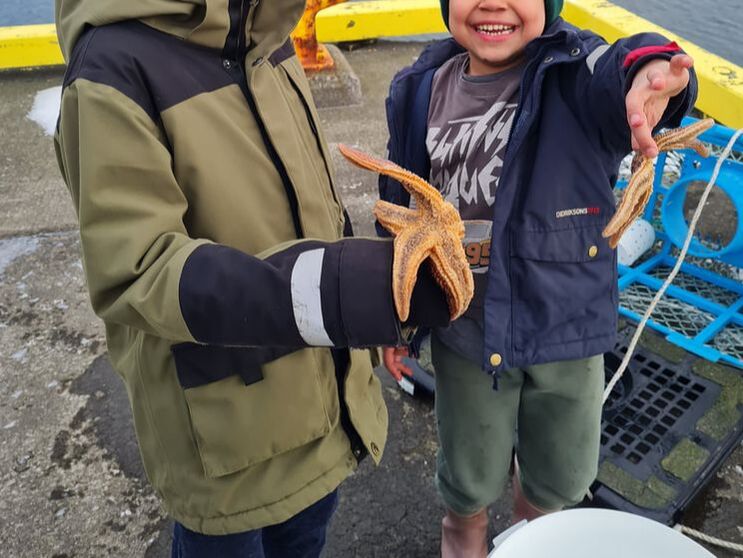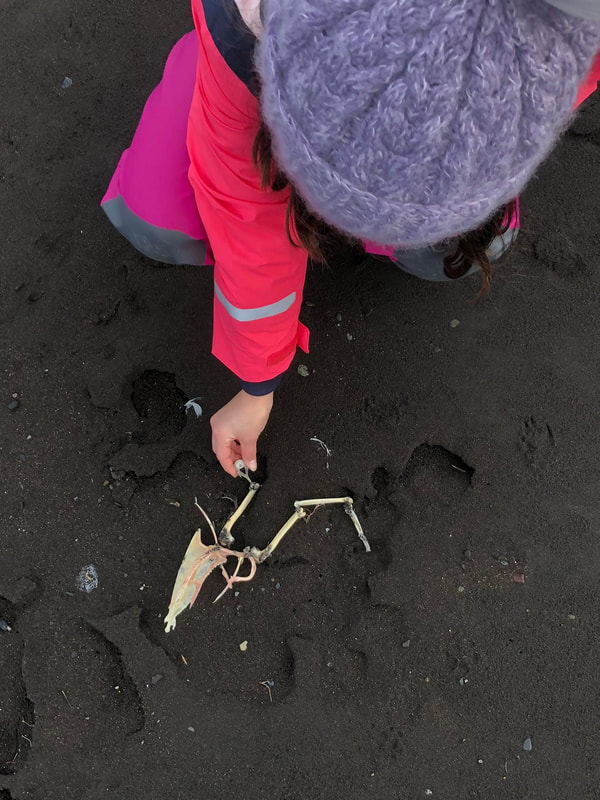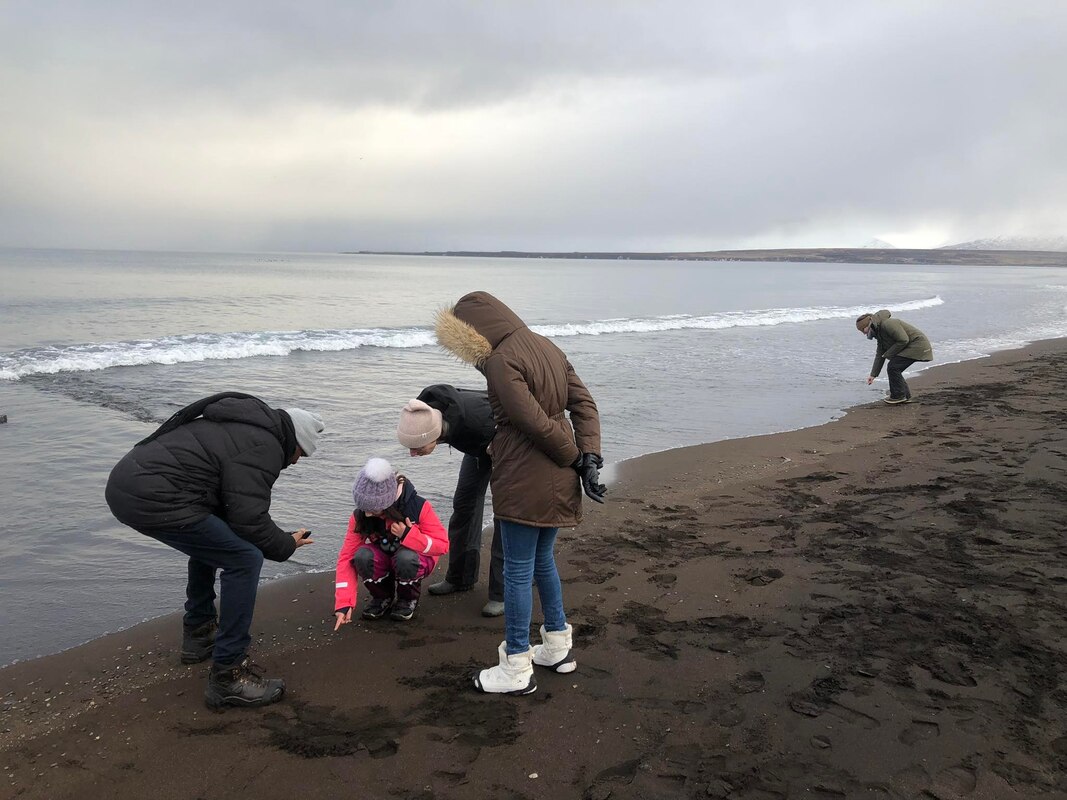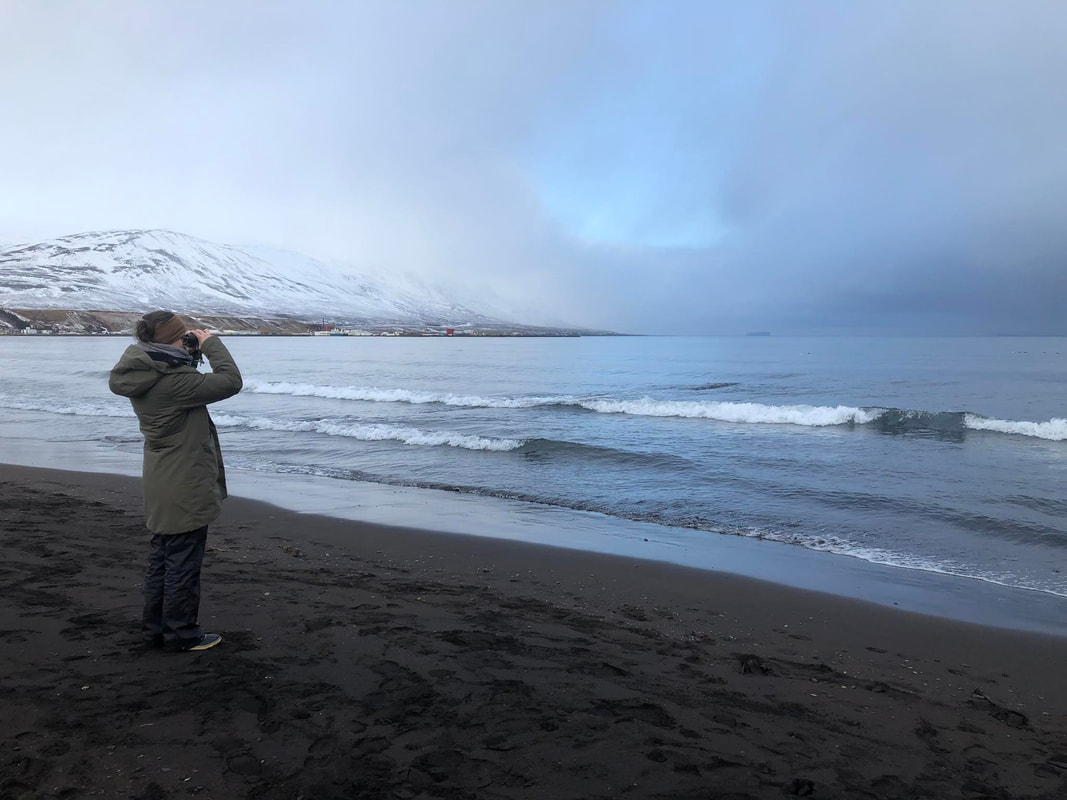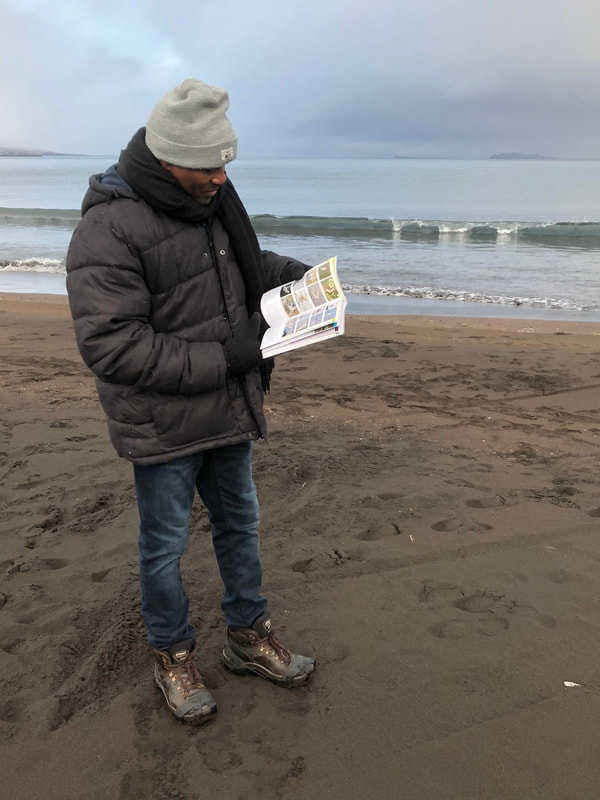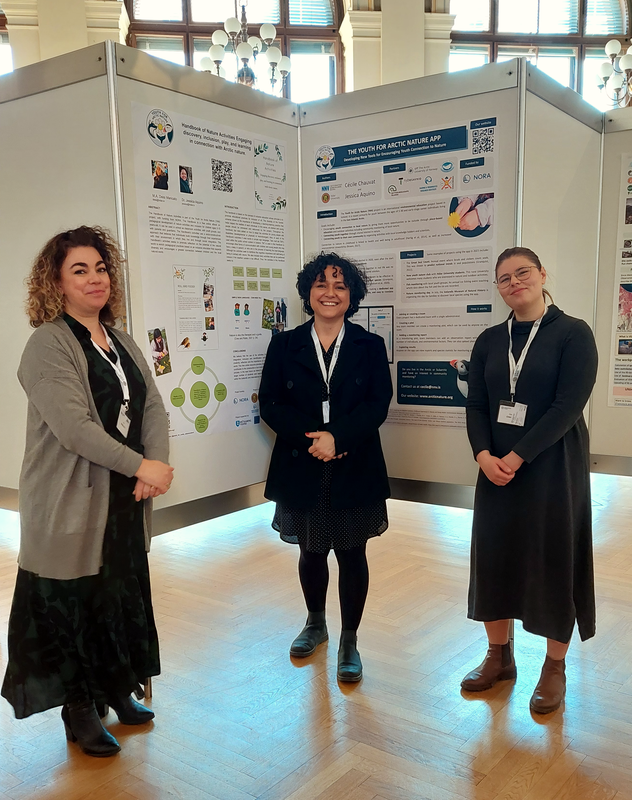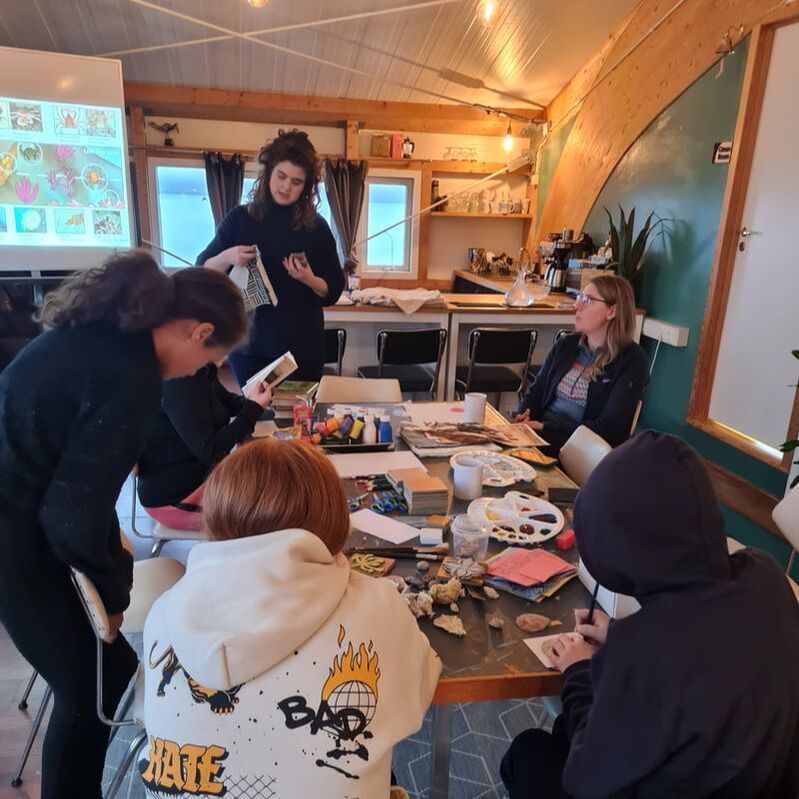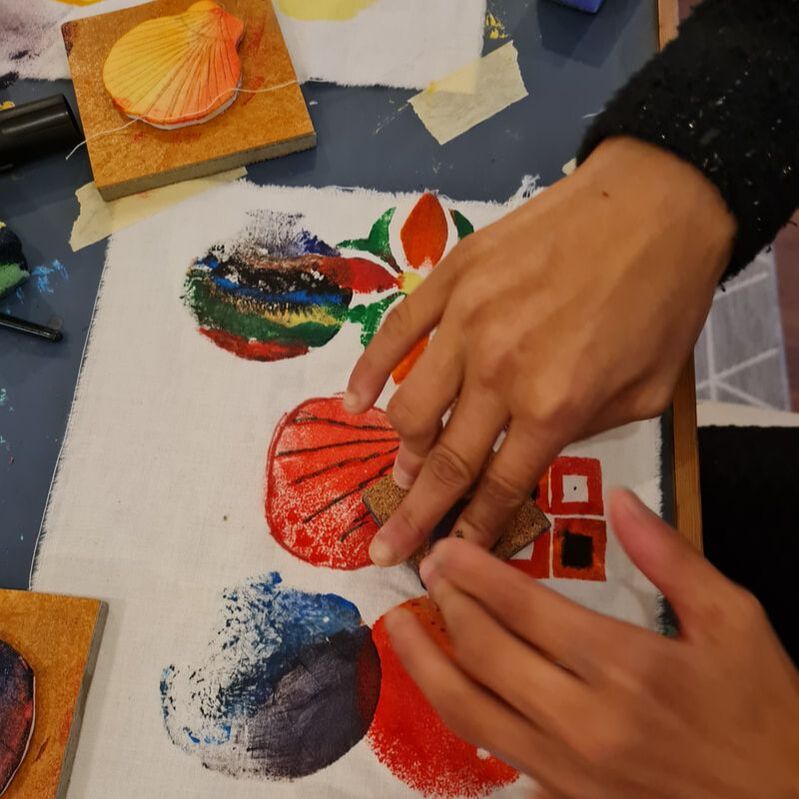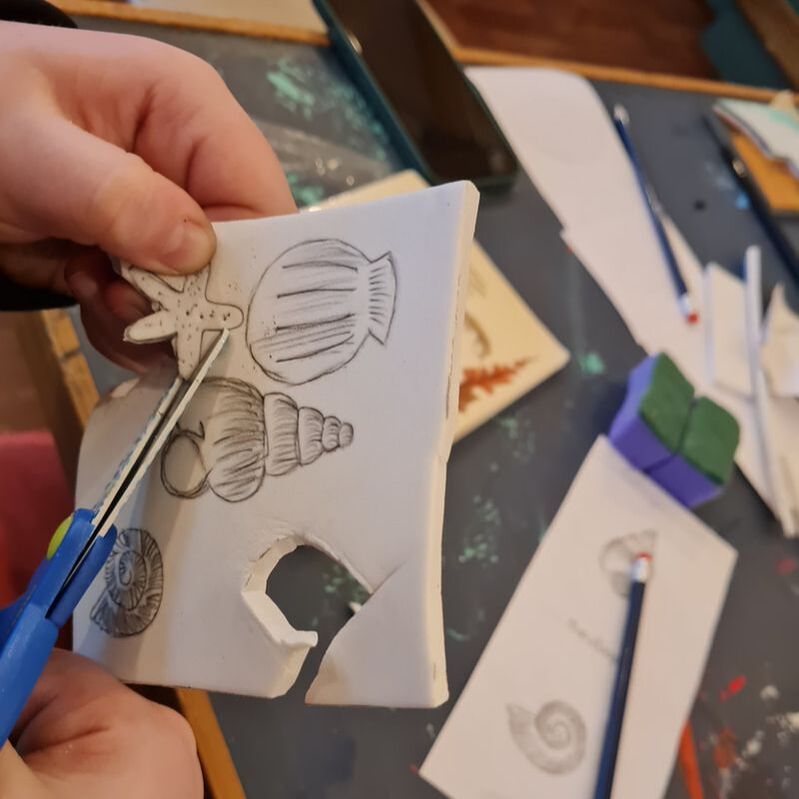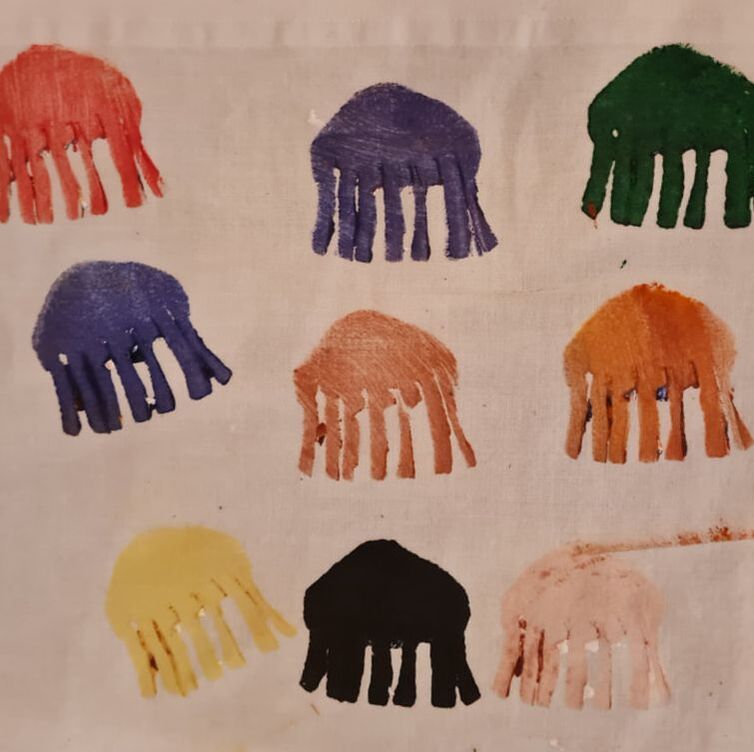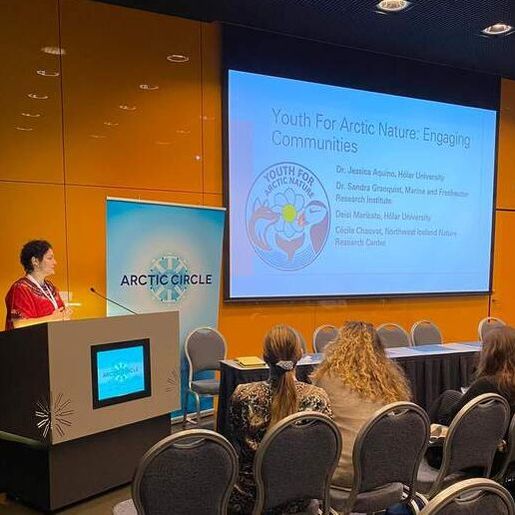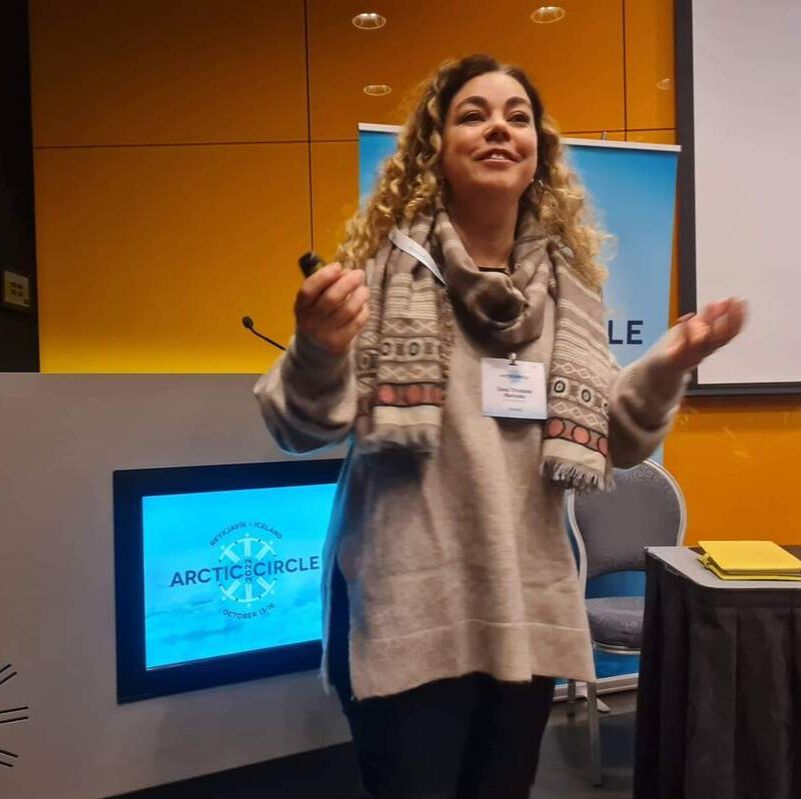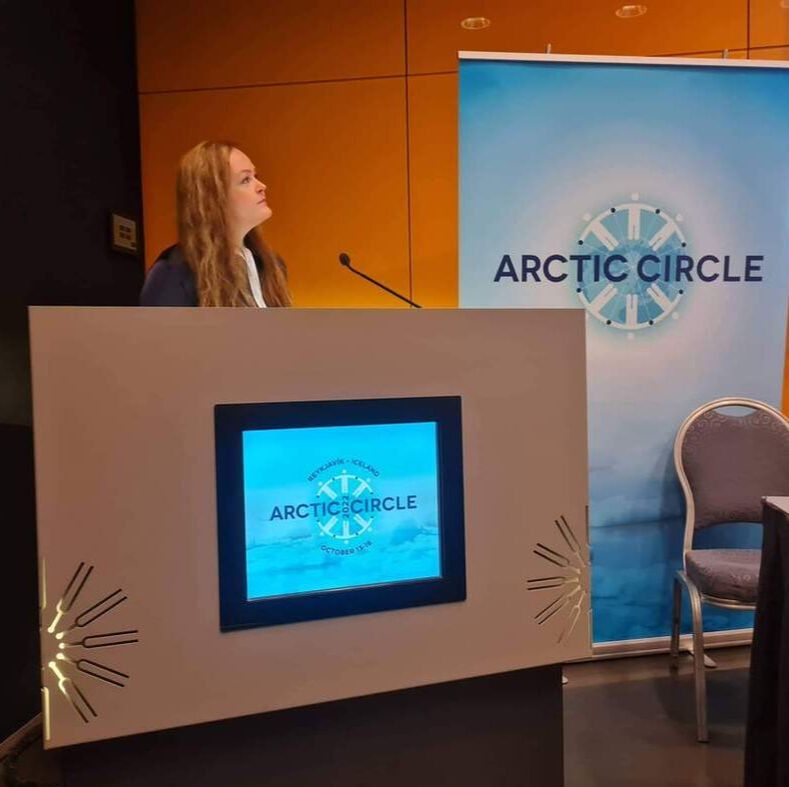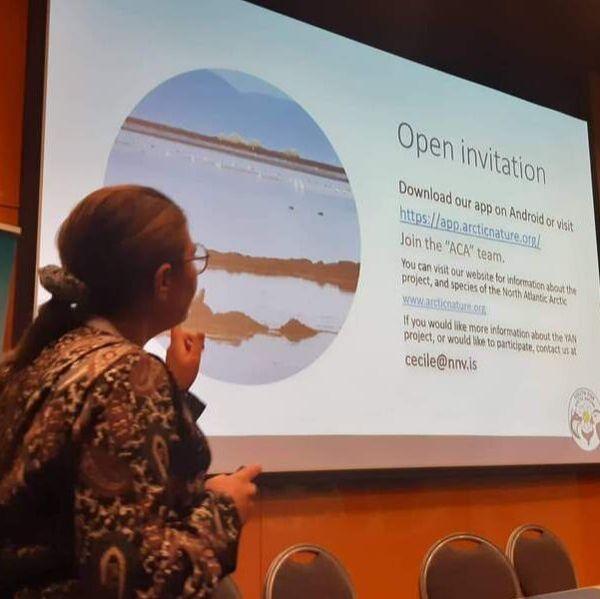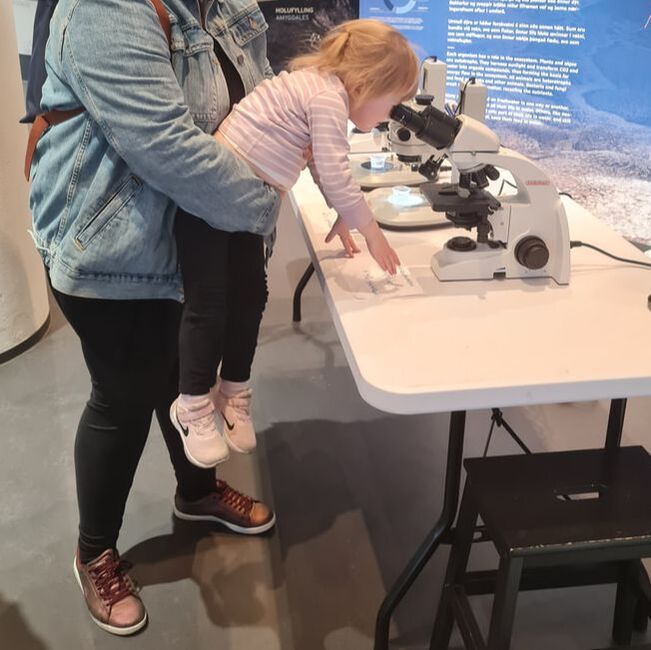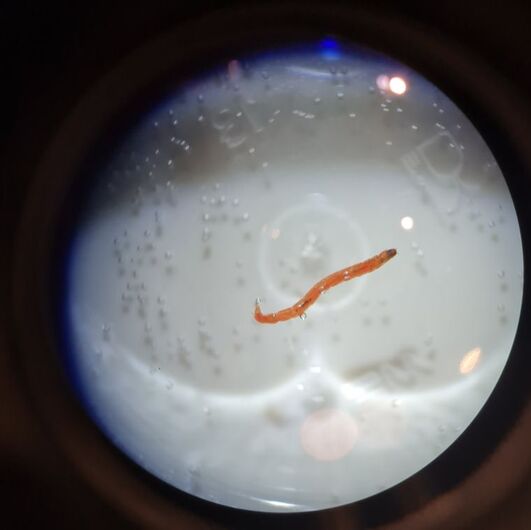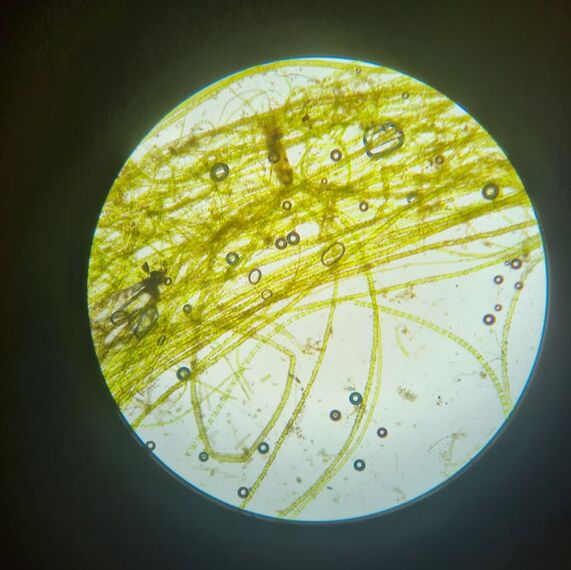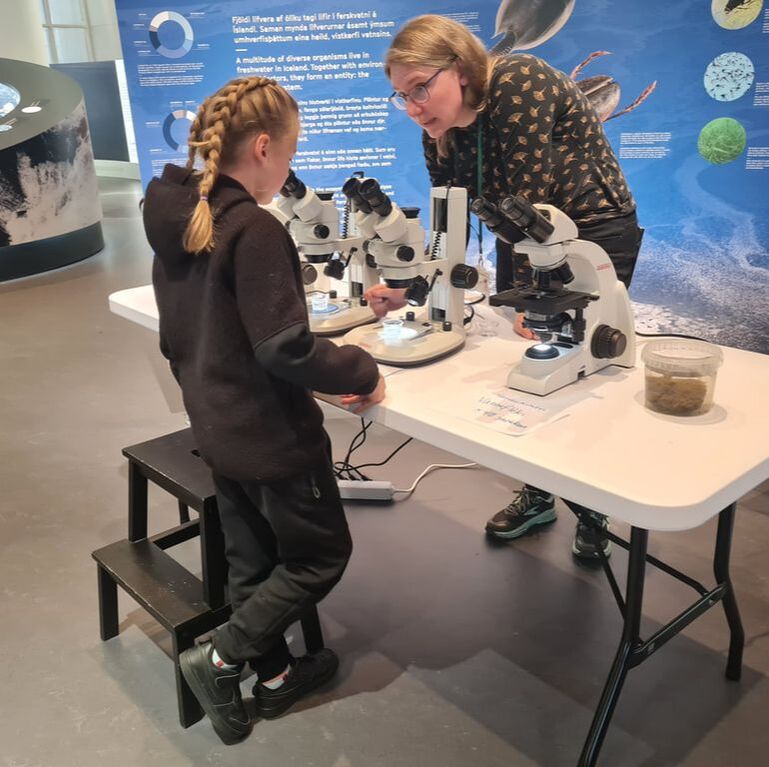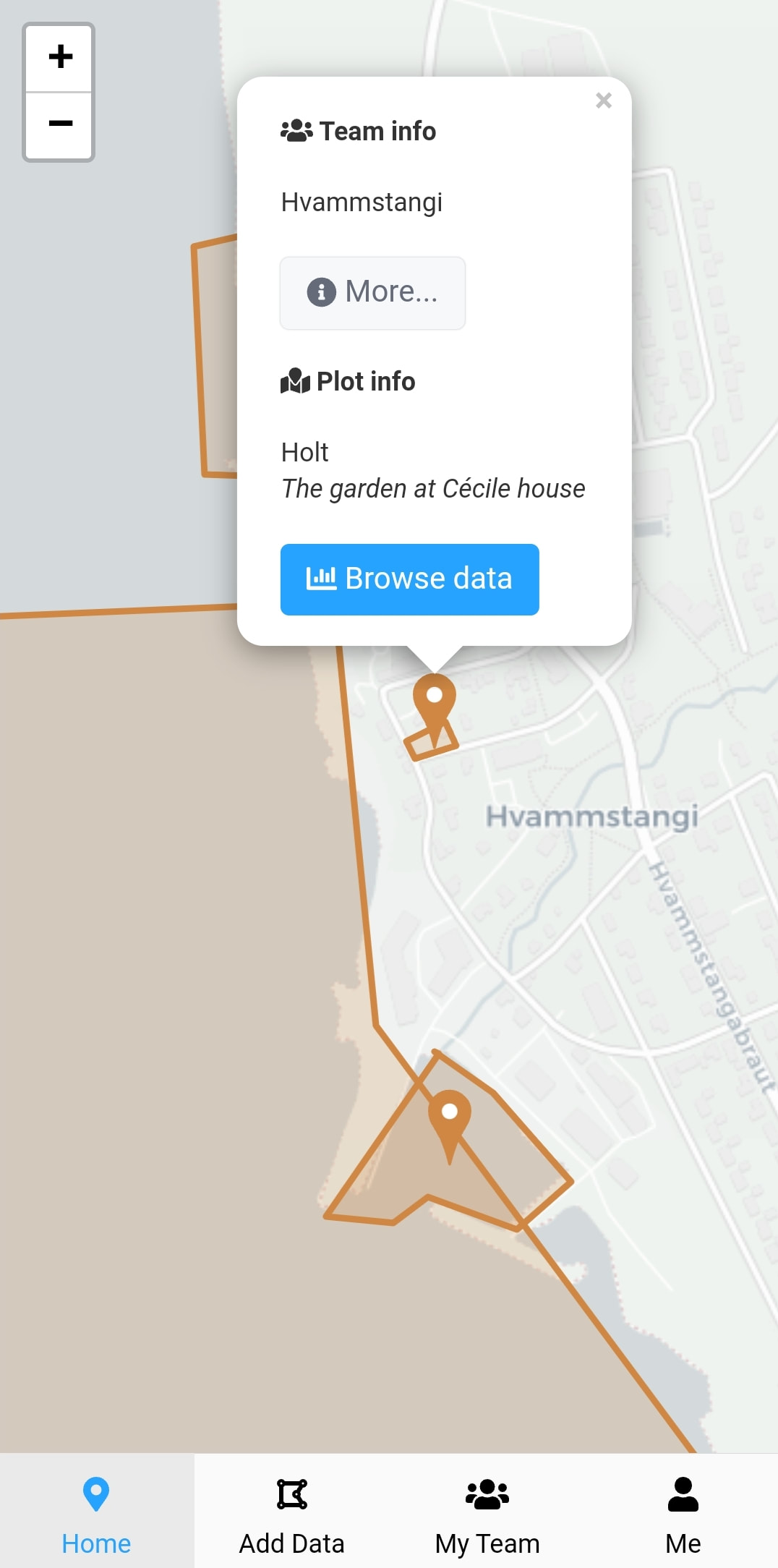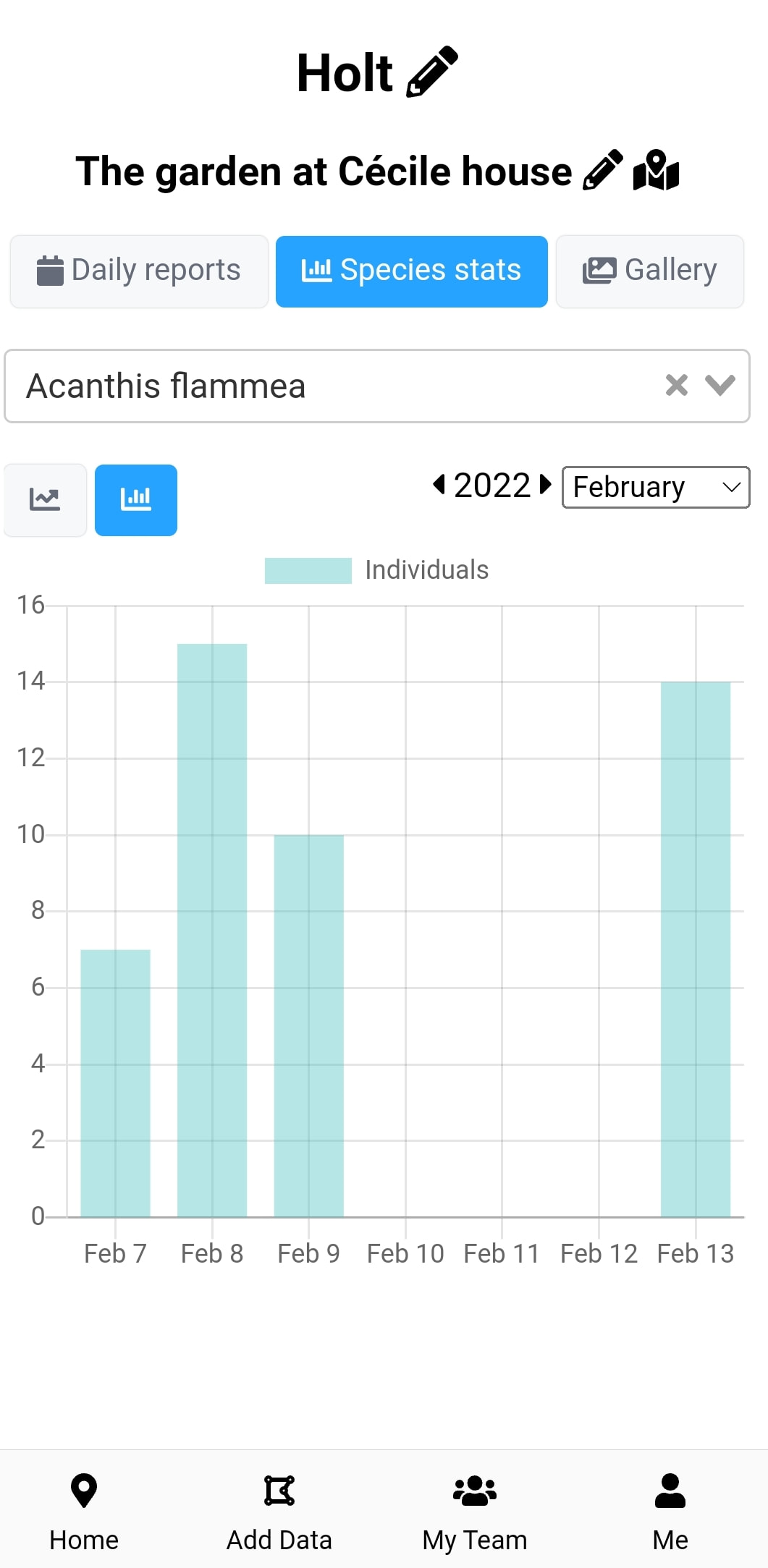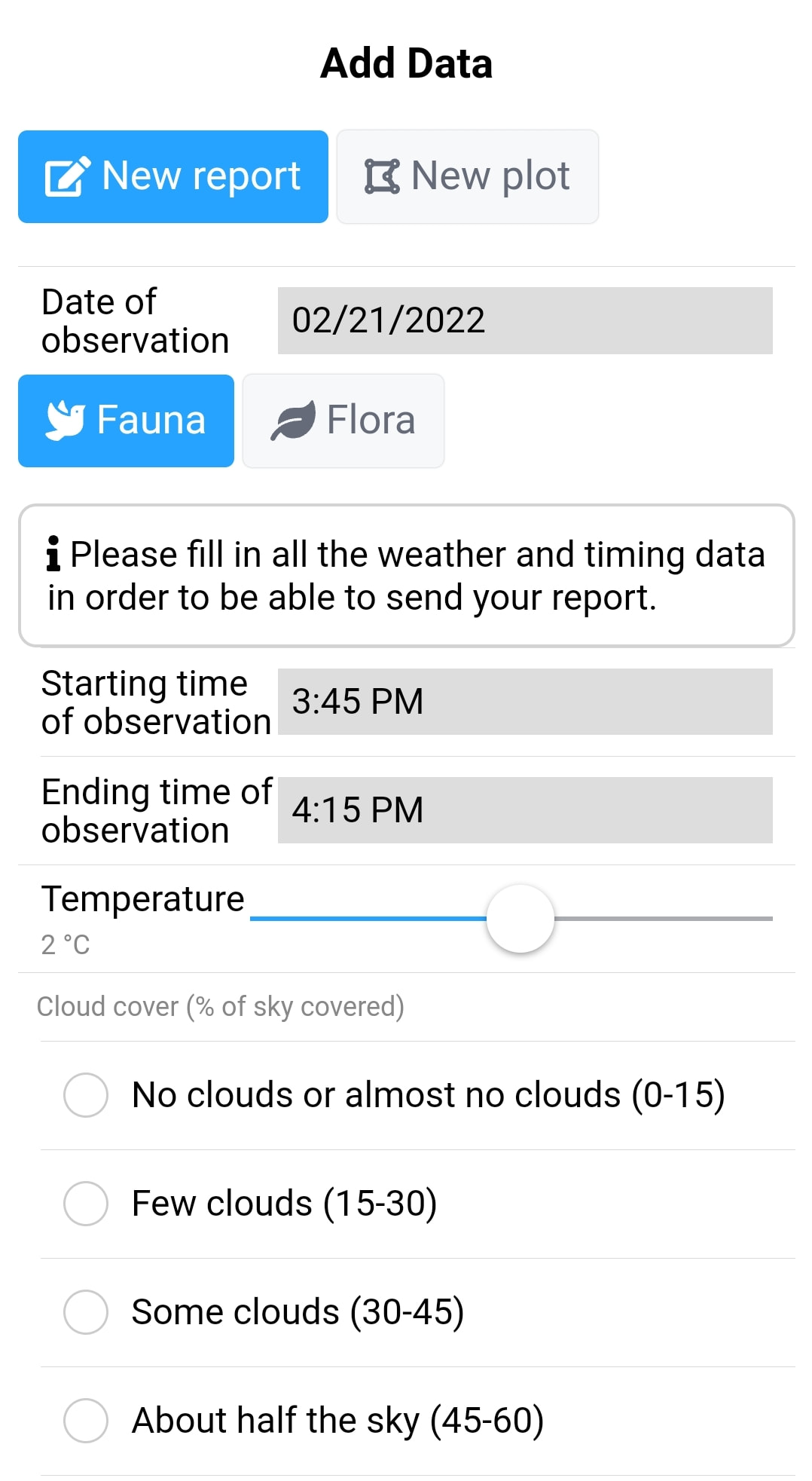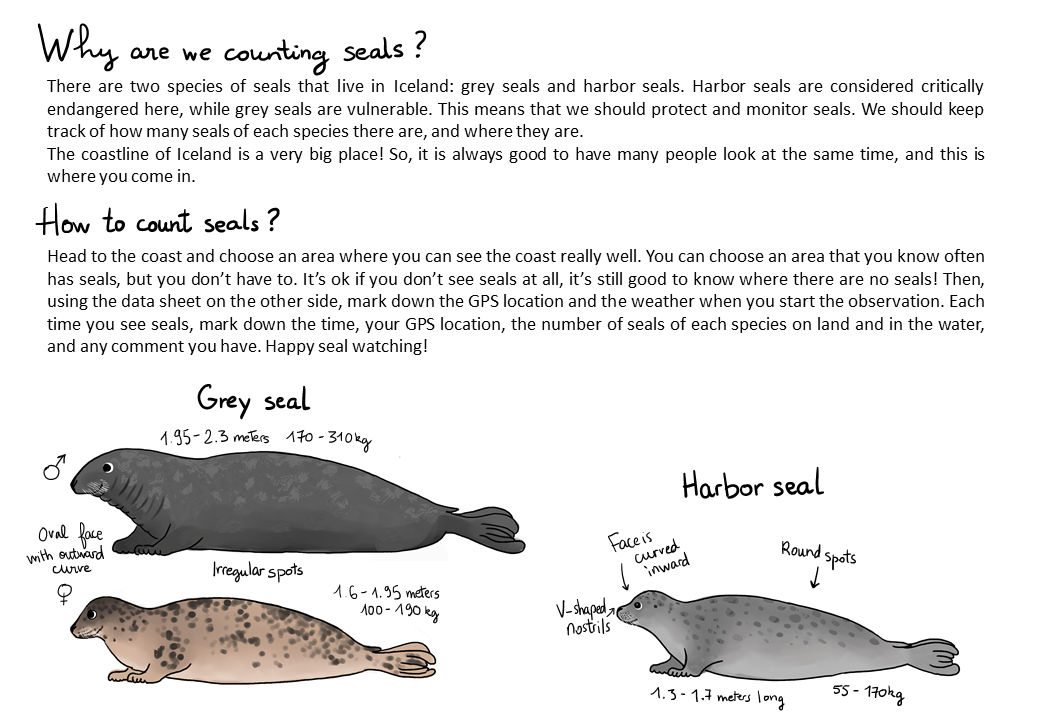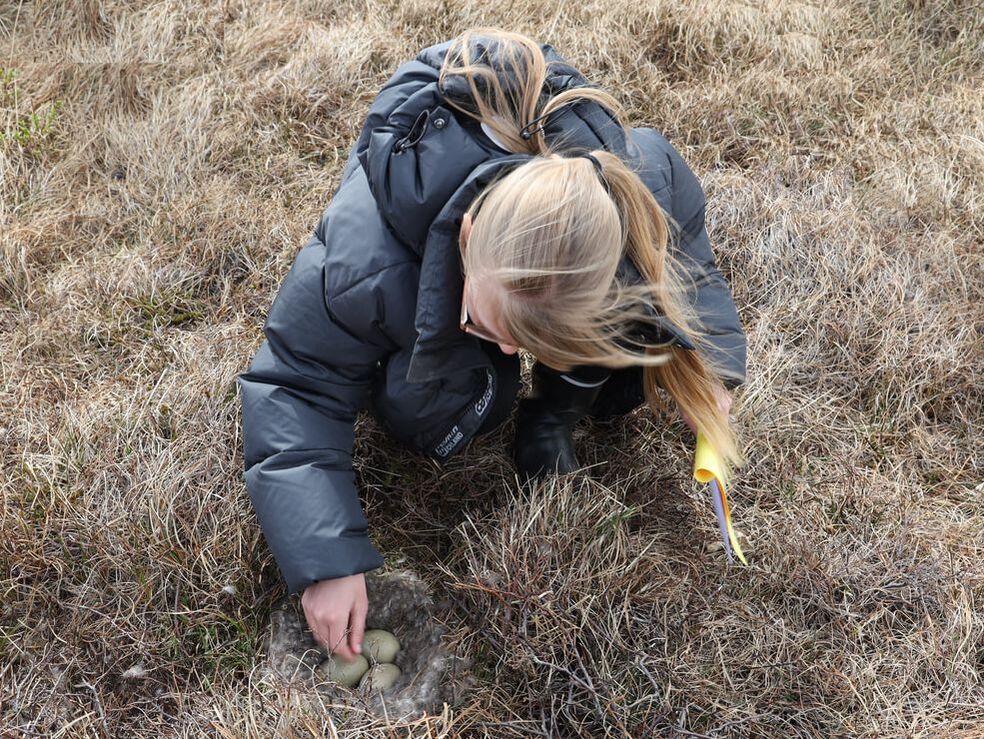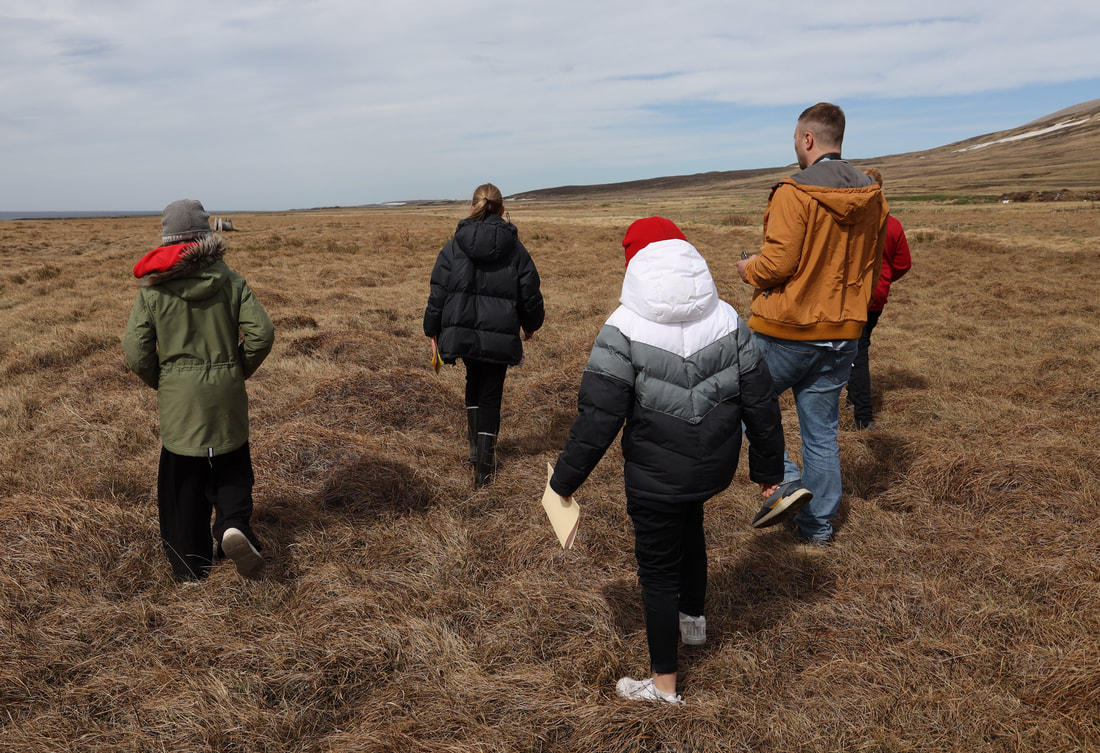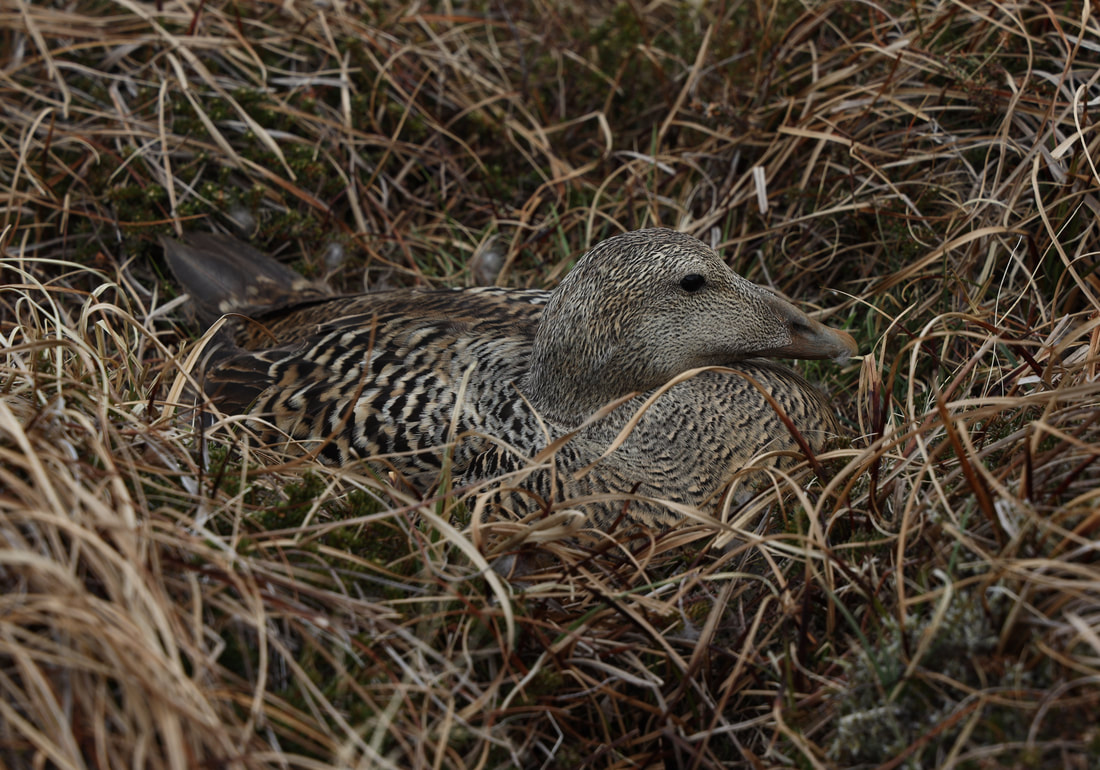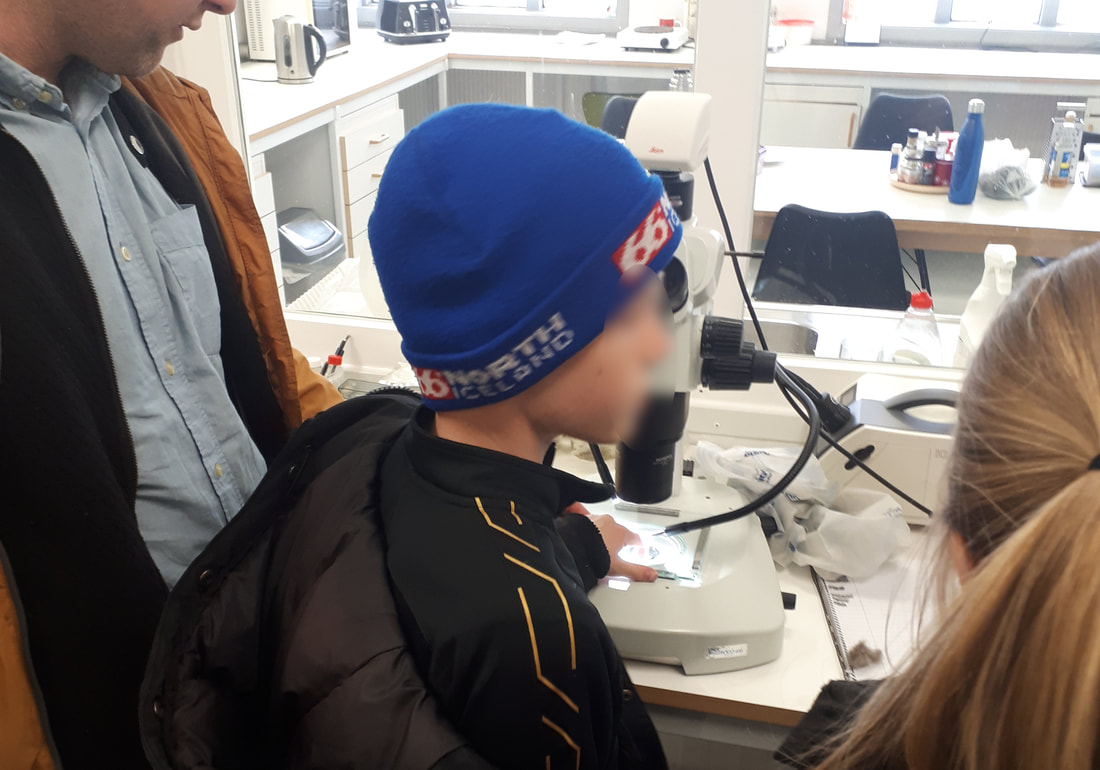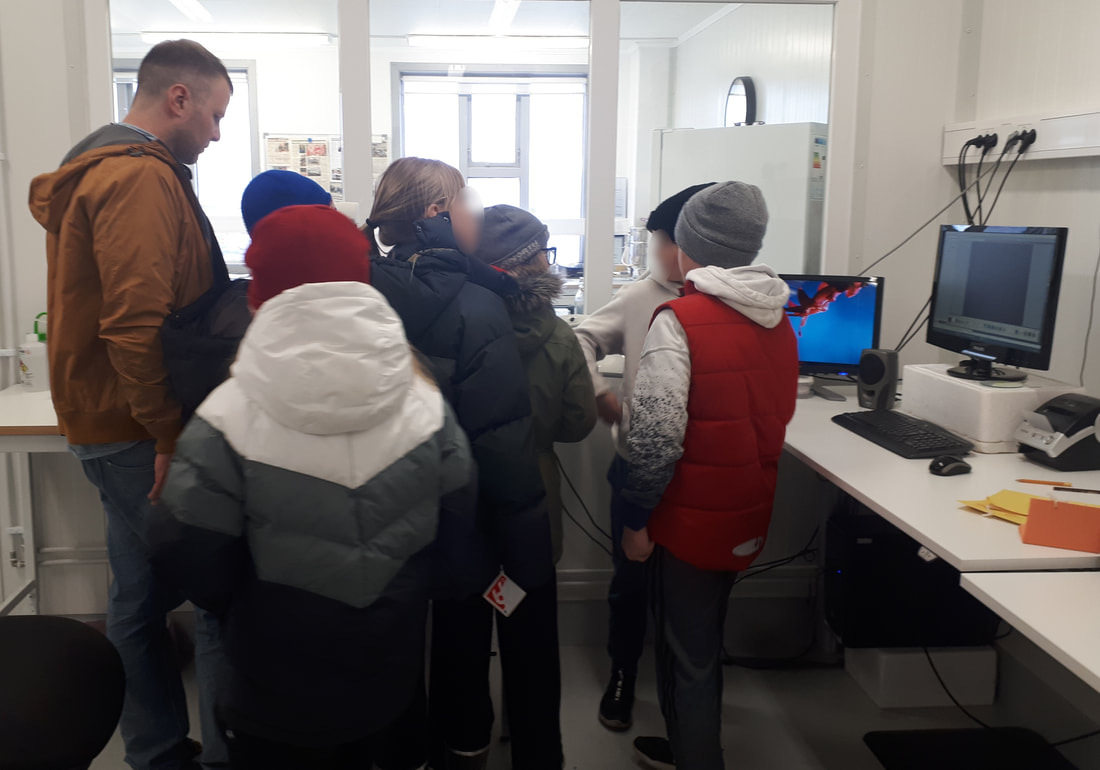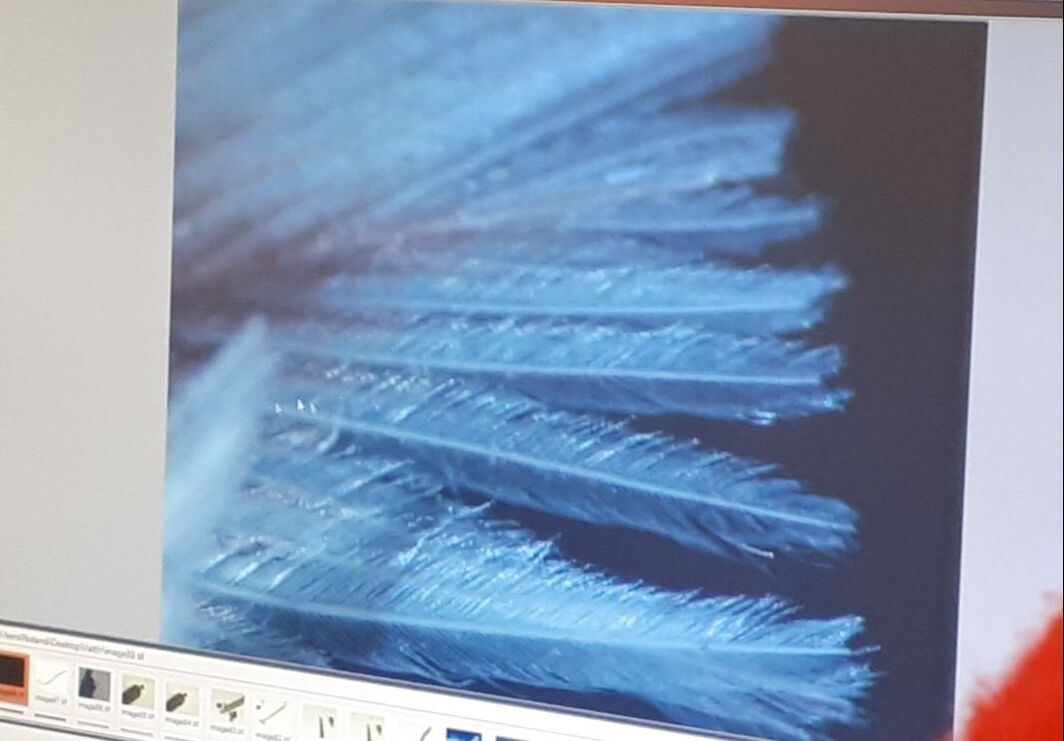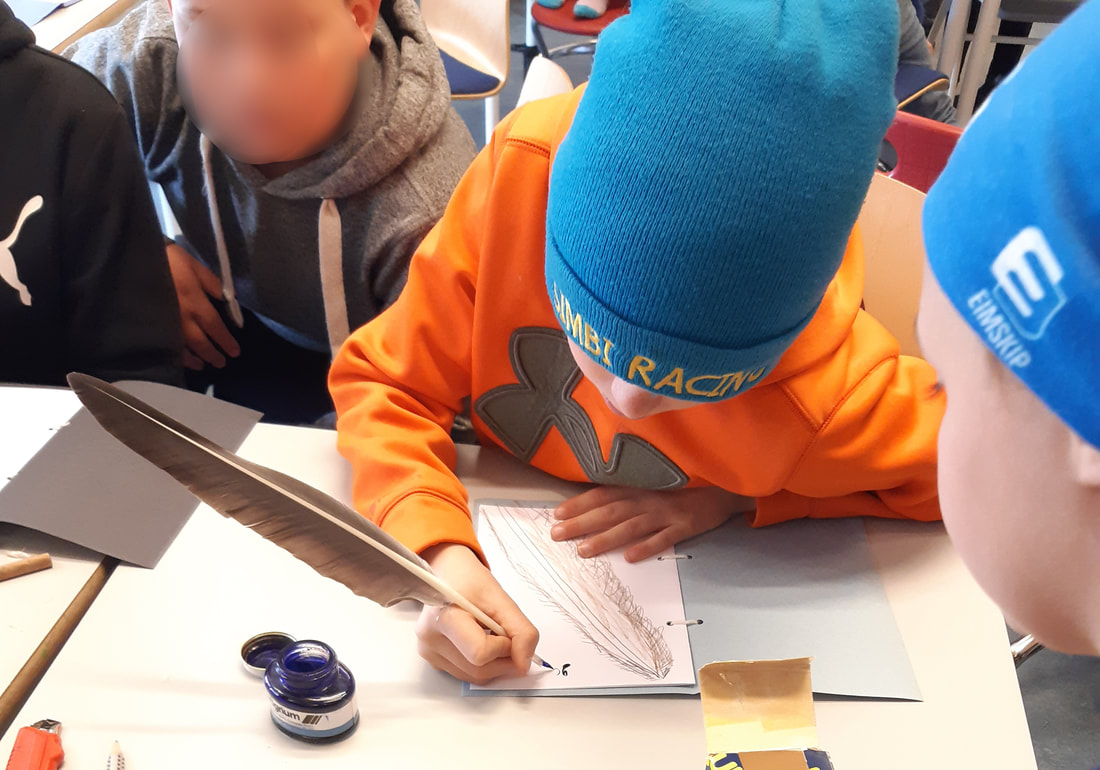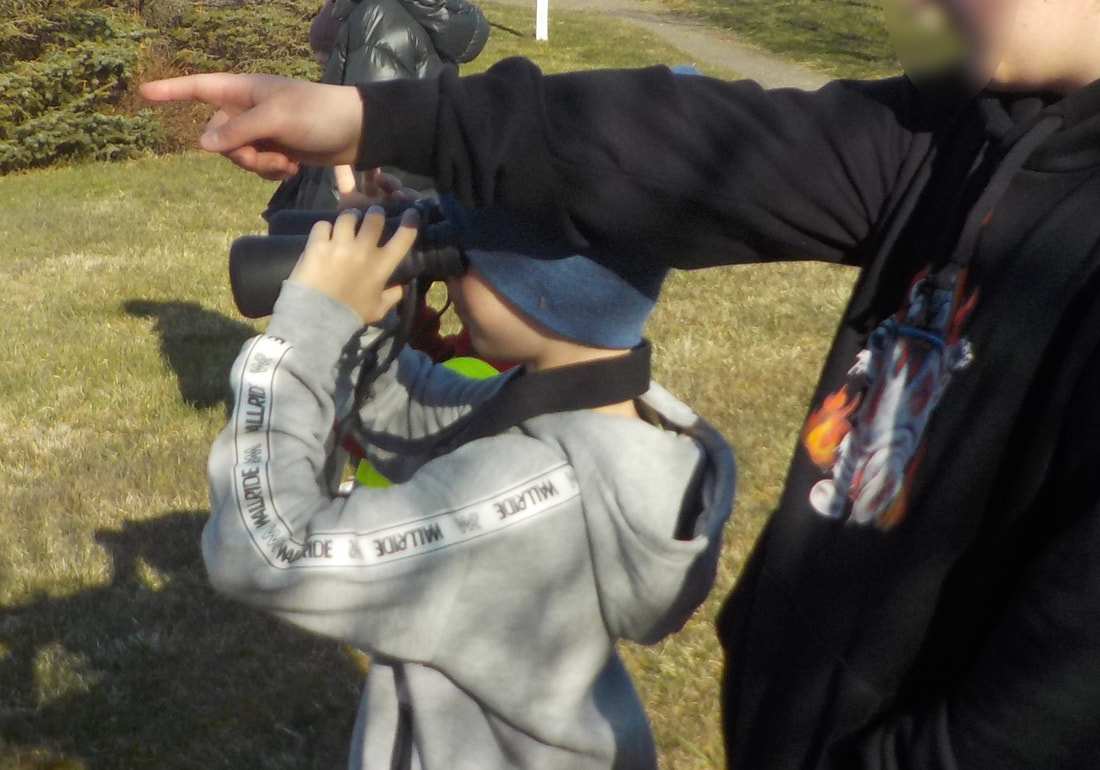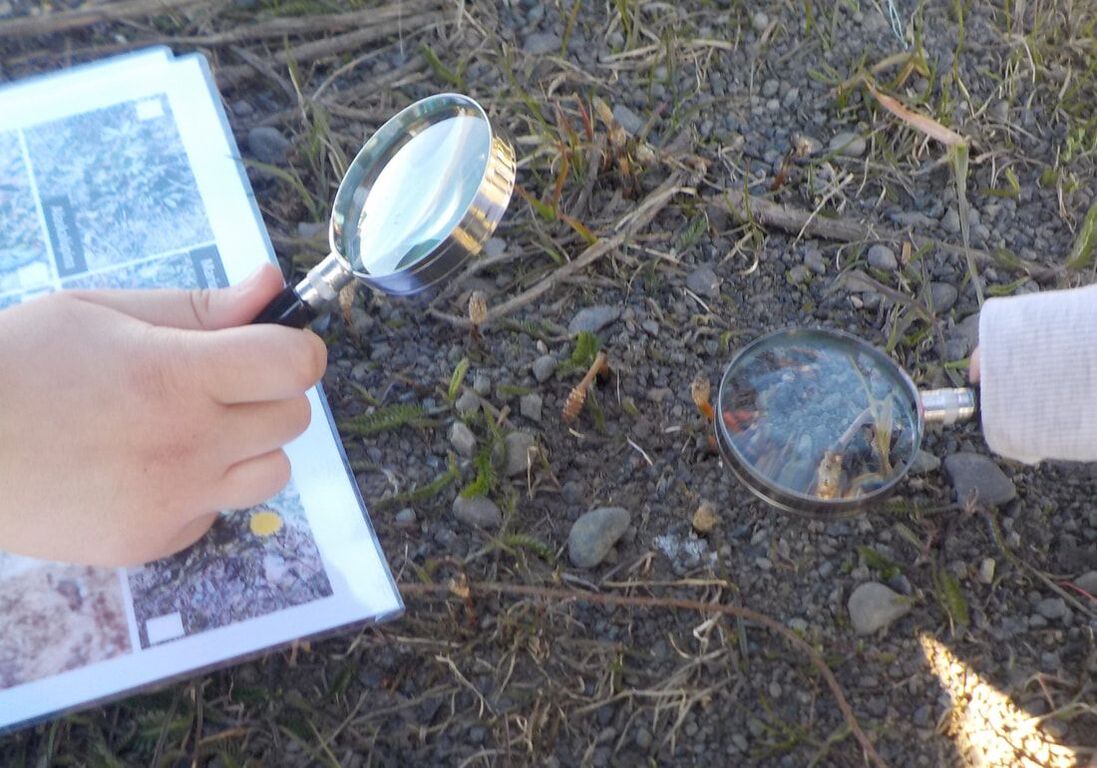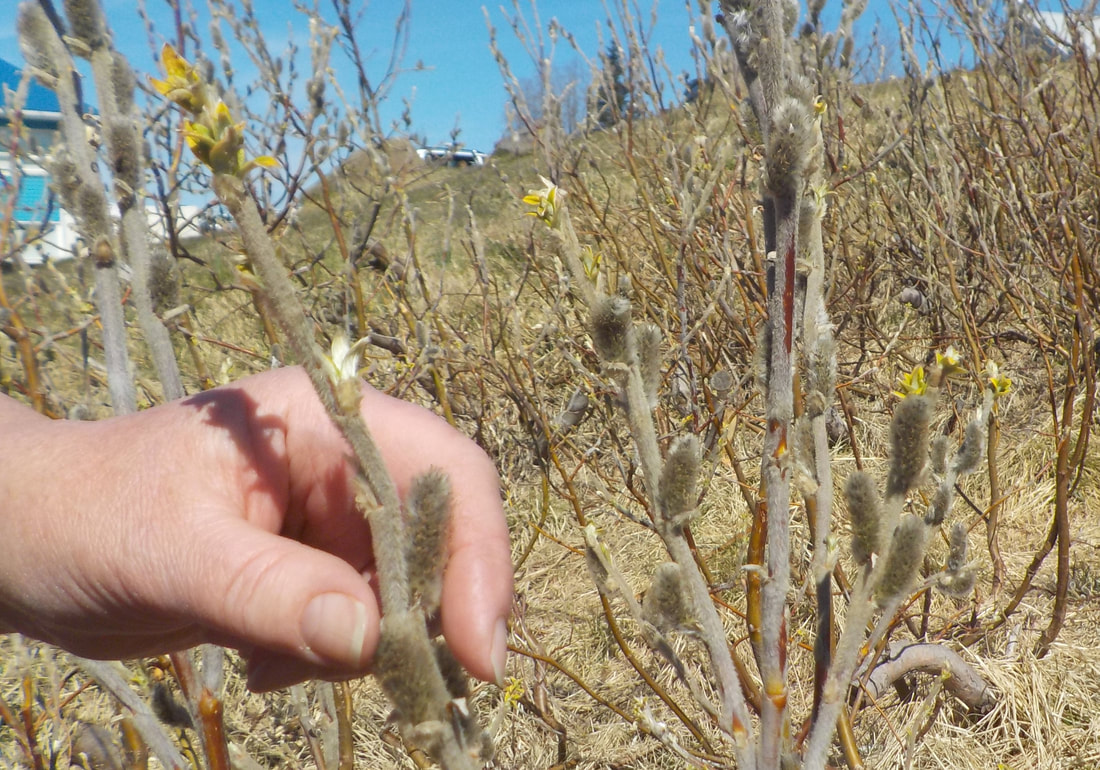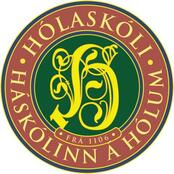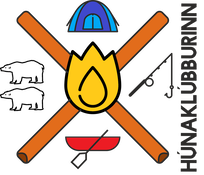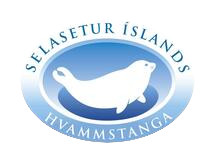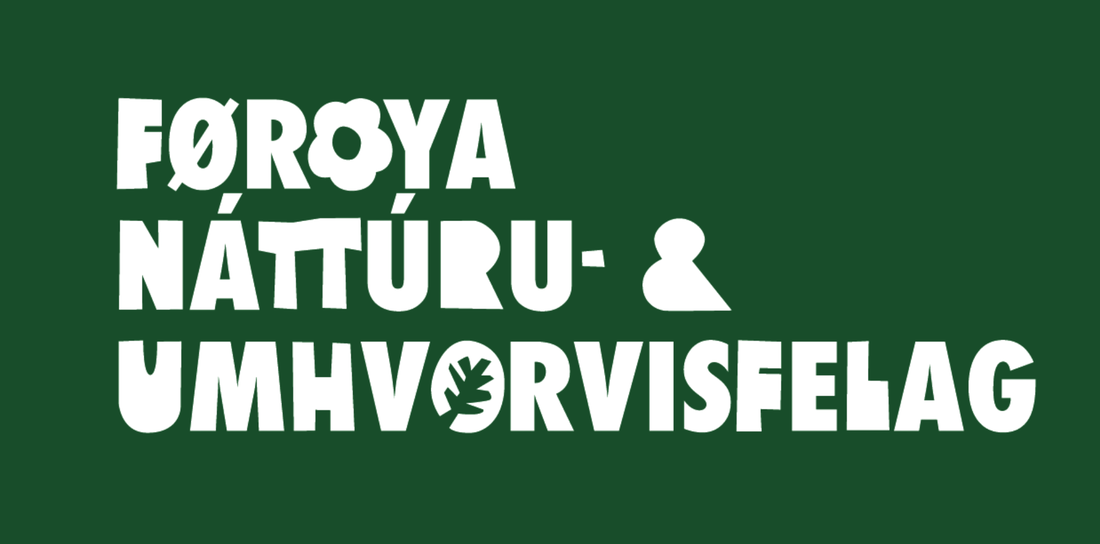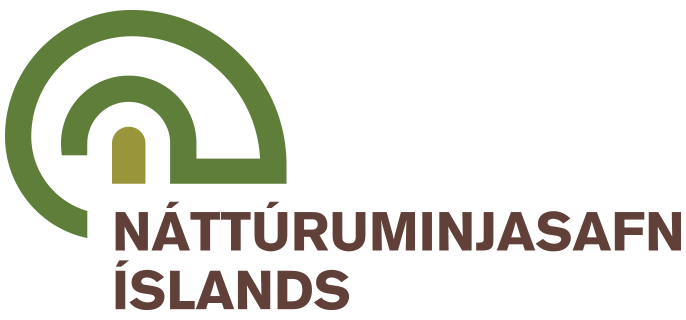March 19th, 2023
Ice fishing with Húnaklúbburinn
The yearly ice fishing event with Húnaklúbburinn took place this Sunday, after a long wait in the last two weeks of cold weather for the ice to get thicker. We were lucky with a wonderful - but cold - weather, and the ice was thick and safe (32cm). One fish was caught in the nets installed earlier by local fishermen, and it was a beautiful Brown trout specimen weighing 800 grams for a length of 44 centimeters.
March 4th-6th, 2023
Discovering wildlife on the shore of Hvammstangi with Húnaklúbburinn
The first crab monitoring day of the year in Hvammstangi took place on Saturday the 4th of March. There was no catch on that day as it was still early in the season, but biologist Eric Dos Santos also took the opportunity to show youth how to use a zooplankton net, and how to look at very small organisms with a stereoscope. The stereoscope and net were generously lent to us by Náttúruminjasafn. We also looked at some birds including long-tailed ducks Clangula hyemalis, eider ducks Somateria mollissima, a red-breasted merganser Mergus serrator, and a great northern diver Gavia immer. We put the crab traps back in to check again later.
Two days later, on Monday, we checked on the traps and and were delighted to find them full with three common starfish Asterias rubens and a common spider crab Hyas araneus.
Two days later, on Monday, we checked on the traps and and were delighted to find them full with three common starfish Asterias rubens and a common spider crab Hyas araneus.
February 23rd, 2023
New Hólar nature club
A new nature club is being formed in Hólar University in collaboration with Youth for Arctic Nature. It is coordinated by Amber Monroe, international representative at Hólar University where she completed her Master's degree in Aquatic and Fish Biology, and aquaponics entrepreneur. The nature club will involve students at the fish biology department of the University, as well as some staff and their families. Wildlife watching and hikes are popular with students, so adding an element of nature monitoring with the app is a natural step. Furthermore, as the nature club will involve students and professional in the field of biology, they will be able to use their knowledge of wildlife and field work in their observation of nature. This can also be beneficial for students new to Iceland in discovering local ecology.
Below are some pictures from the first nature hike organized by the club on the 23rd of February 2023. They observed eiders ducks in the harbour area, some ravens, a curious seal at the beach, and a few interesting invertebrates on the shore. Plenty of bones were also found, which made it fun to try to guess which animal they belonged to. They also uploaded their observations to the app.
We are proud to have funded the purchase of field books and binoculars for the Hólar nature club, and look forward to organizing activities together!
Below are some pictures from the first nature hike organized by the club on the 23rd of February 2023. They observed eiders ducks in the harbour area, some ravens, a curious seal at the beach, and a few interesting invertebrates on the shore. Plenty of bones were also found, which made it fun to try to guess which animal they belonged to. They also uploaded their observations to the app.
We are proud to have funded the purchase of field books and binoculars for the Hólar nature club, and look forward to organizing activities together!
February 21st to 24th, 2023
Arctic Science Summit Week in Vienna
|
Organized by the International Arctic Science Committee, the 2023 Arctic Science Summit Week (ASSW) in Vienna focused on the Arctic in the Anthropocene. Issues related to climate change, education, indigenous governance and knowledge, community-based monitoring, and much more, were approached from multidisciplinary perspectives with input from both natural and social scientists.
Dr. Jessica Aquino presented the overall methodology of our project. Dr. Sandra Granquist explained the importance of citizen science to collect valuable data and increase public awareness of environmental issues through her work on the Great Seal Count in Northwestern Iceland. Deisi Maricato introduced her new Handbook of Nature Activities, engaging discovery, inclusion, play, and learning in connection with Arctic nature. Finally, Cécile Chauvat presented her work on the Youth for Arctic Nature app, and how it is used in the YAN project to connect youth to local nature. From left to right: Deisi Maricato, Dr. Jessica Aquino, and Cécile Chauvat
Dr. Sandra Granquist attended online |
November 15th, 2022
Art and Biodiversity workshop with the Natural History Museum of Iceland
On the 15th of November, we welcomed Helga Aradóttir and Ragnhildur Guðmundsdóttir from the Natural History Museum of Iceland to the Húnaklúbburinn weekly art workshop in Hvammstangi. Helga is a maker, designer, and environmental educator, and Ragnhildur is Doctor of biology who specializes in groundwater ecology and crustaceans. They organized a workshop about biodiversity on the Icelandic shore, and how it can be used to inspire art, in collaboration with Húnaklúbburinn and Youth for Arctic Nature. Ragnhildur described how Icelandic shores are inhabited by different species of plants, algae and invertebrates which live at different depths, and Helga explained how to use the shapes of these species to create textile stamps. Beautiful artworks were created, and the group will meet once more to design a communal piece which will reflect how shore species are separated into different zones, creating a rich and diverse ecosystem. This artwork will be shown in Perlan next May!
October 15th, 2022
Youth for Arctic Nature presentation at the Arctic Circle Assembly
On Saturday the 15th of October, the Youth for Arctic Nature project was presented at the Arctic Circle Assembly at Harpa. This presentation described the efforts of the project, based in Northwest Iceland, to create international connections between Arctic youth groups, scientists, and local communities through wildlife monitoring and nature-based educational activities.
Dr. Jessica Aquino, the project manager, presented an overview of the project, methods, and theoretical underpinnings. Dr. Sandra Granquist, head of seal research at the Icelandic Seal Center and lead scientist for YAN, focused on the scientific value of the project as community science. Deisi Maricato presented her work on the YAN Handbook, a guide of activities with the main objective of promoting a greater connection between children and local nature which will be published and free online. Finally, Cécile Chauvat, the coordinator of the project, presented her work in creating tools to facilitate nature monitoring for youth with the YAN nature monitoring app.
Dr. Jessica Aquino, the project manager, presented an overview of the project, methods, and theoretical underpinnings. Dr. Sandra Granquist, head of seal research at the Icelandic Seal Center and lead scientist for YAN, focused on the scientific value of the project as community science. Deisi Maricato presented her work on the YAN Handbook, a guide of activities with the main objective of promoting a greater connection between children and local nature which will be published and free online. Finally, Cécile Chauvat, the coordinator of the project, presented her work in creating tools to facilitate nature monitoring for youth with the YAN nature monitoring app.
September 4th, 2022
Life in Freshwater with the Icelandic Museum of Natural History
Yesterday, youth and families had a chance to have a closer look at life in Icelandic freshwater at Náttúruminjasafn Íslands (the Icelandic Museum of Natural History) in Perlan. They used two microscopes and two stereoscopes that were bought partly thanks to Youth for Arctic Nature funding to observe often overlooked aquatic bugs and plants, such as water boatmen, midge larvae, diving beetles, and green algae. The event was very successful, and we can't wait to organize some activities and projects together in the future.
Fall 2021
An app for the Youth for Arctic Nature project
Húnaklubburinn and its collaborators in the project are happy to announce that they are developing a mobile app for Youth for Arctic Nature. It will be fully interactive and make it easier for youth to monitor nature, share data, and connect with each other. The app will be ready to download for free in December 2021.
July 25th, 2021
Pupping season for harbor seals
Harbor seals are one of the two seal species that breed in Iceland, and July is the season where they usually have their pups! The pups are born with adult fur and the ability to swim, unlike the pups of the other Iceland breeding seal species, grey seals. Grey seals pup later, in the fall. Their pups have white fur and are unable to swim. Here, you can find a guide on how to recognize the adults of both species and an introduction on why it is important to monitor seal numbers in Iceland.
Because harbor seals pup in July, it is also the time for the Great Seal Count, where staff and volunteers from the Icelandic Seal Center gather and count all seals in the Vatnsnes peninsula. Read about it here.
Because harbor seals pup in July, it is also the time for the Great Seal Count, where staff and volunteers from the Icelandic Seal Center gather and count all seals in the Vatnsnes peninsula. Read about it here.
May 28th, 2021
Eider duck nesting site monitoring in Skagaströnd
Mid-May to mid-June is the time for eider ducks to incubate their eggs. It is interesting, in that period, to study how many eggs each can be found in each nest, and where the nests are located within the colony. In Iceland, many eider duck nesting sites are protected by farmers who collect their down feathers when the ducks and ducklings have left the nest. We were lucky to get in touch with a eider farmer. He let us enter the nesting site and count eggs with the youth group from Skagaströnd and Valtýr Sigurðsson, youth leader and marine biologist from Náttúrustofa Norðurlands vestra. After the group came back to Valtýr's office, he showed the kids how to use his microscope to look at feathers up-close!
Below are a few pictures form the day.
Please do not enter nesting sites without permission from the farmer and adequate supervision, as the ducks are very sensitive and need minimal disturbance to produce healthy ducklings.
Below are a few pictures form the day.
Please do not enter nesting sites without permission from the farmer and adequate supervision, as the ducks are very sensitive and need minimal disturbance to produce healthy ducklings.
May 20th-26th, 2021
Nature learning with the Hvammstangi school
It was our pleasure to join the teachers from the Hvammstangi Grunnskóli in teaching a nature workshop for four days in the end of May. All classes, from 1st to 10th graders, participated in mixed groups. Activities included photography, drawing, bird watching, educational outdoor games, a bird and plant scavenger hunt, using binoculars, and learning about feathers, plants, seeds, and whale teeth! Hoping to do the same thing next year.
